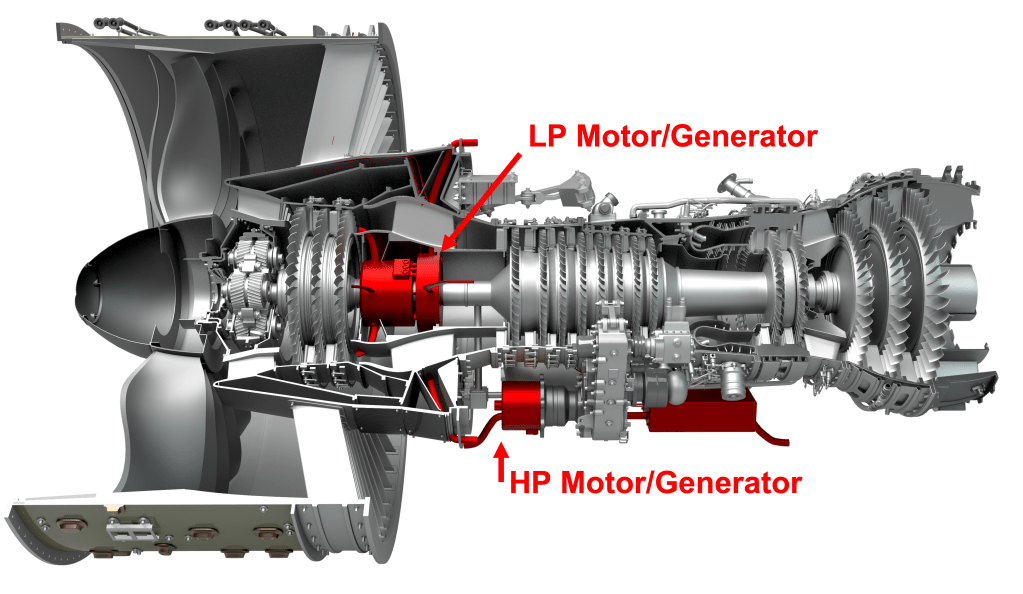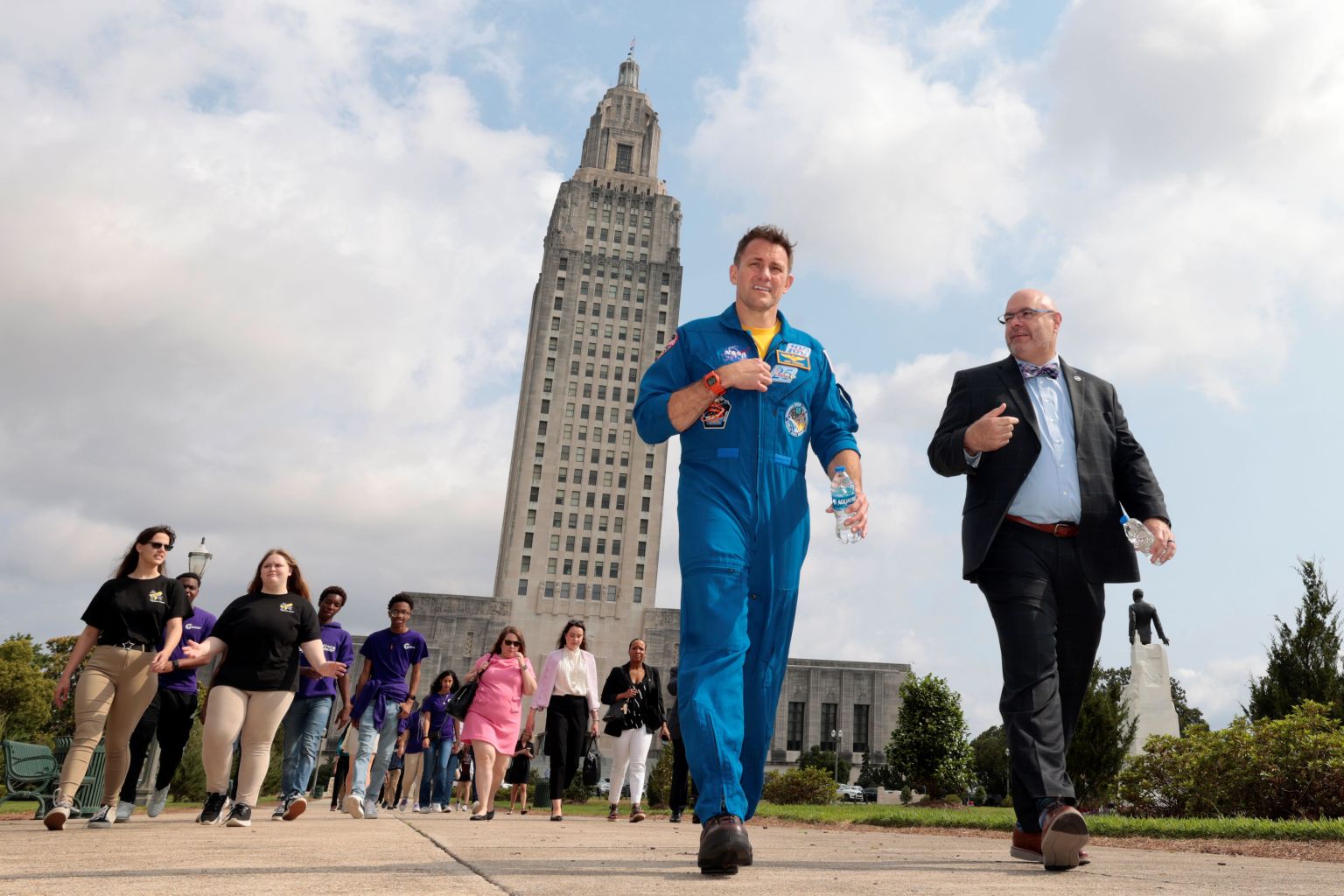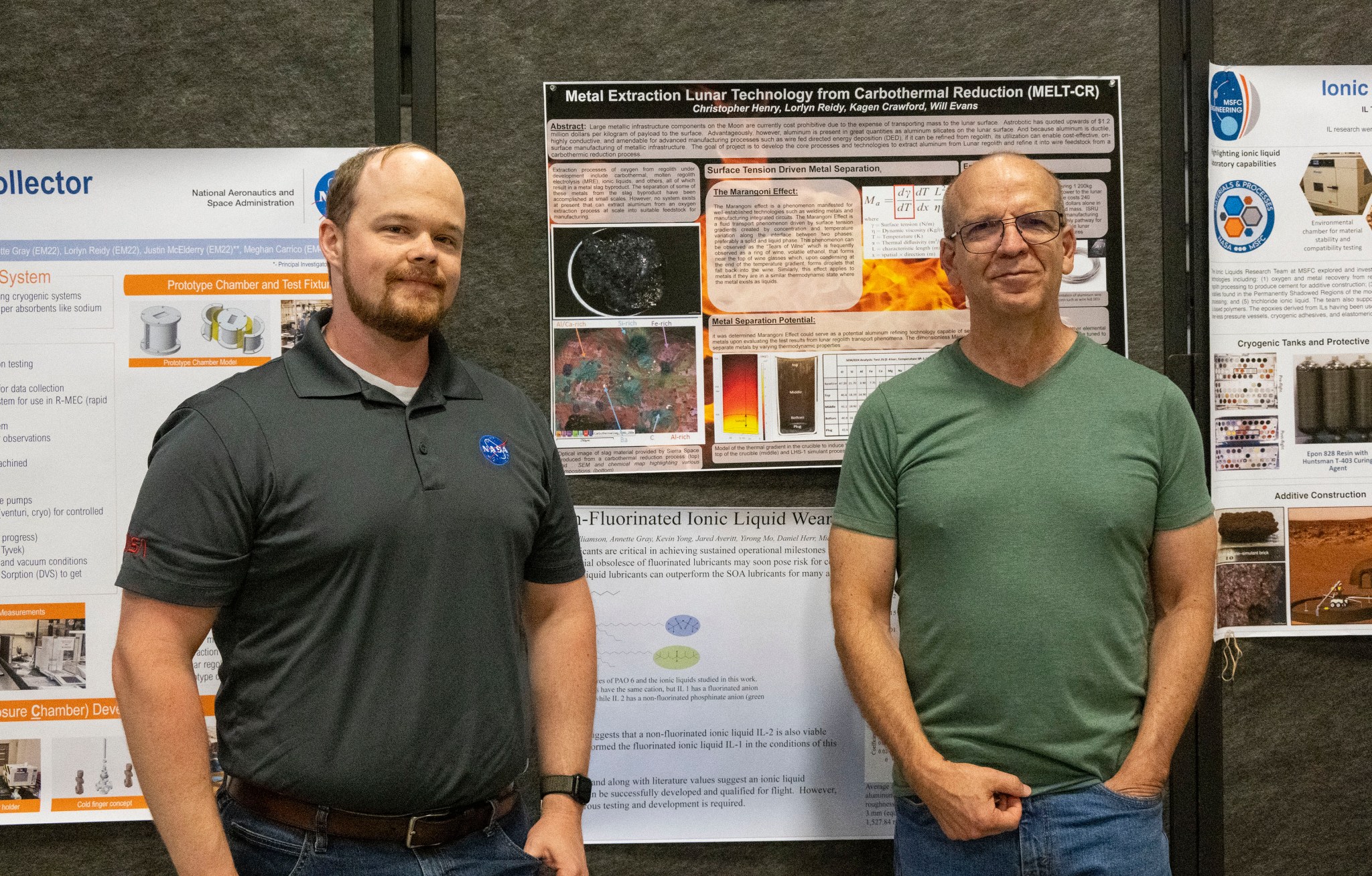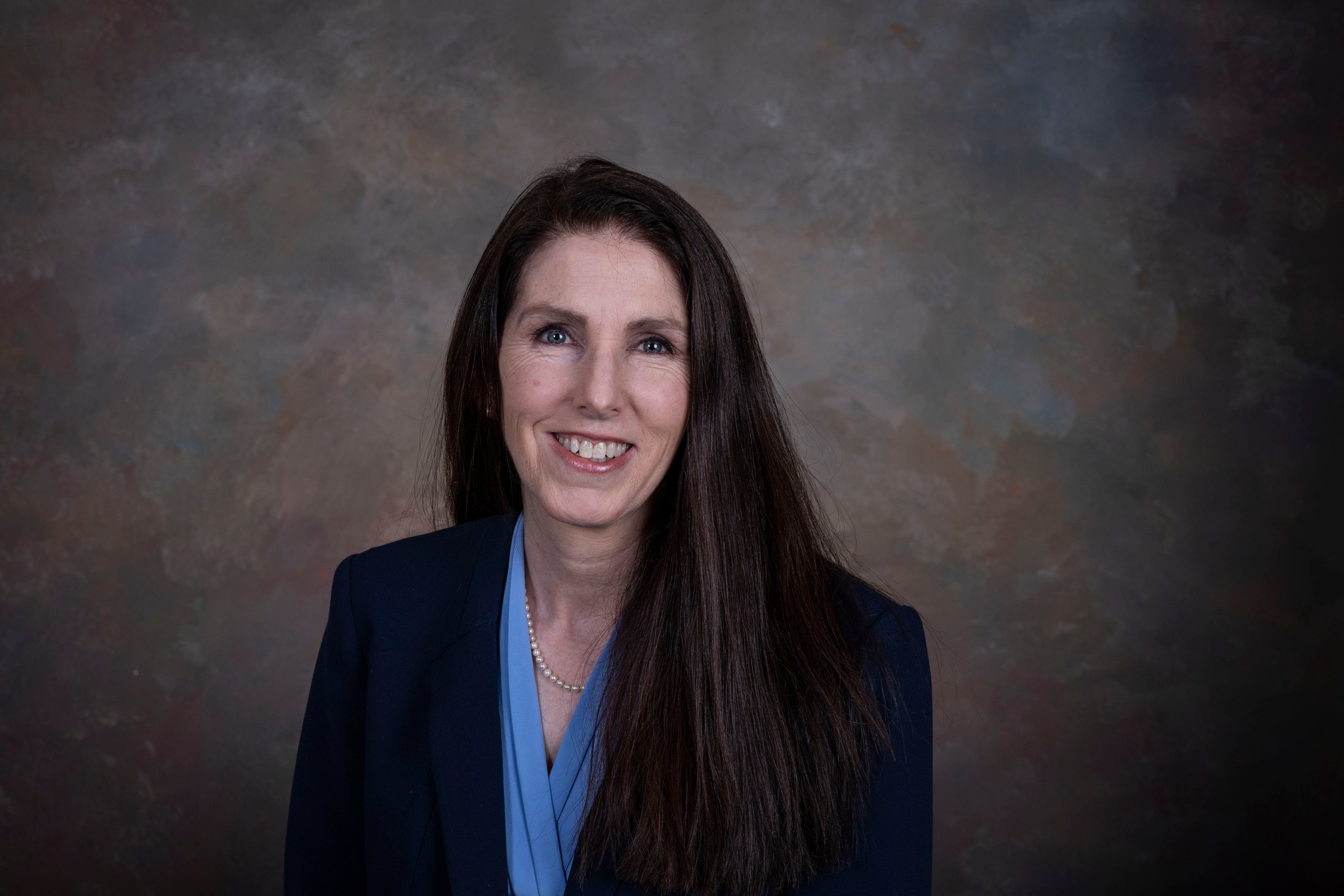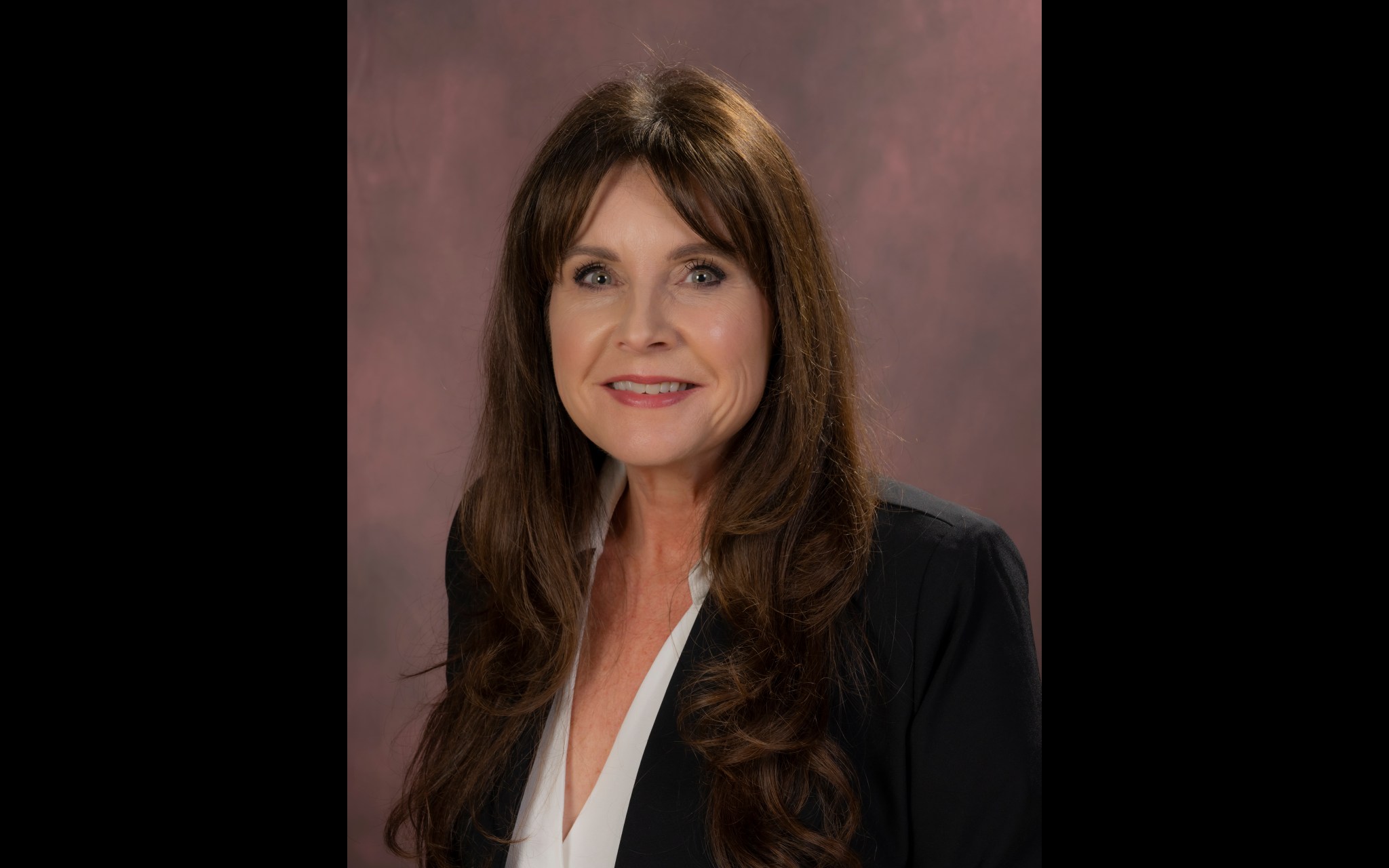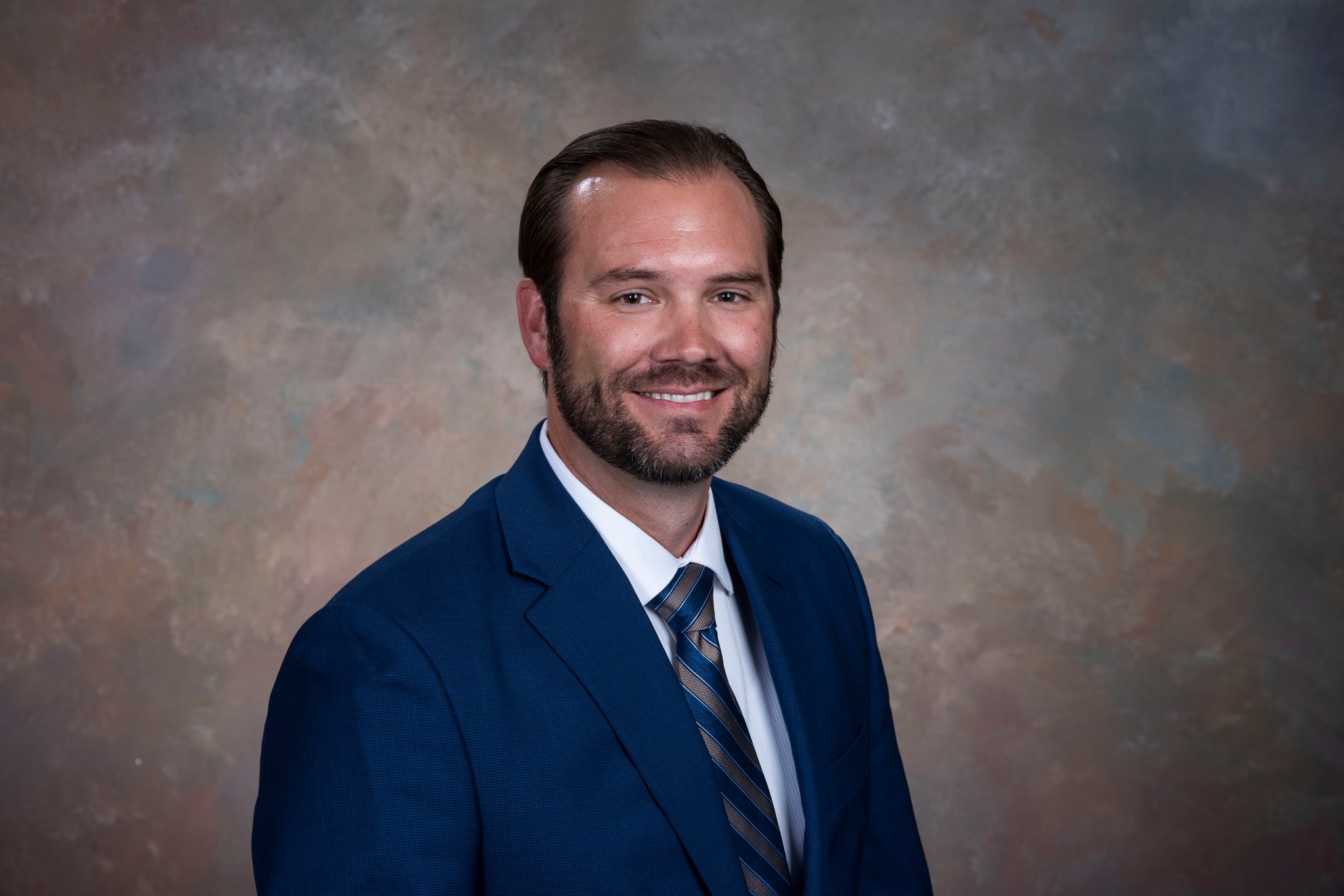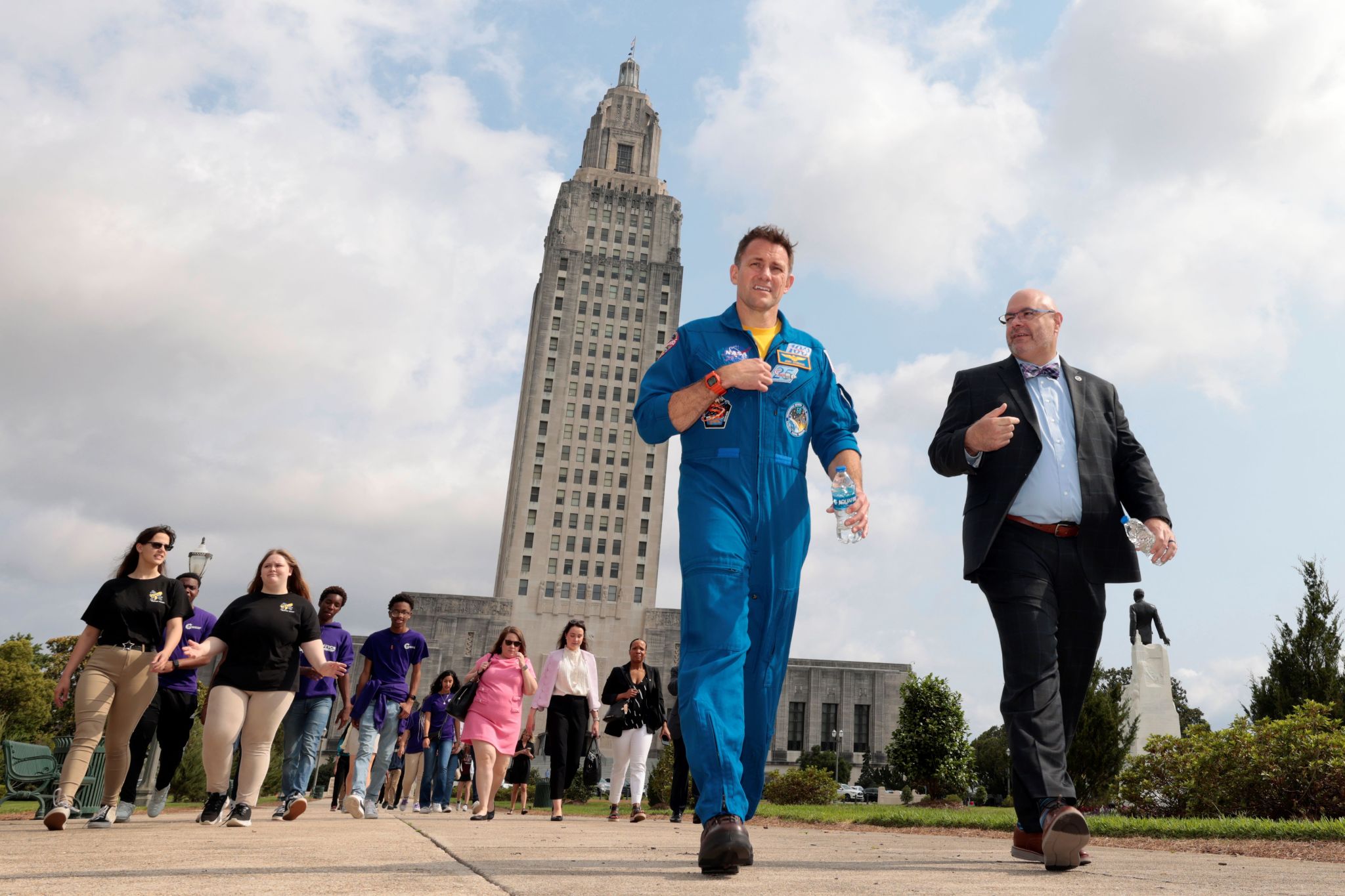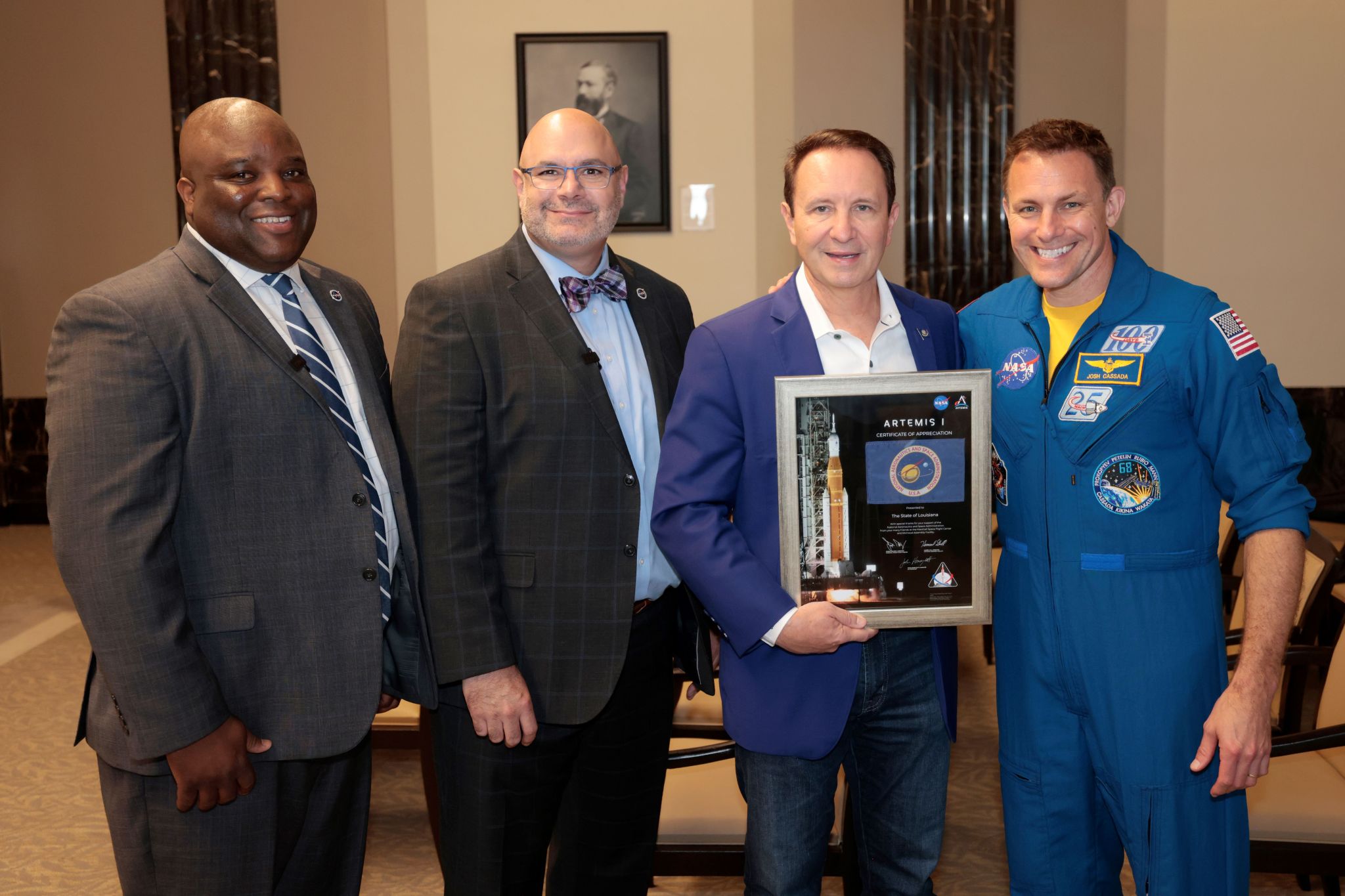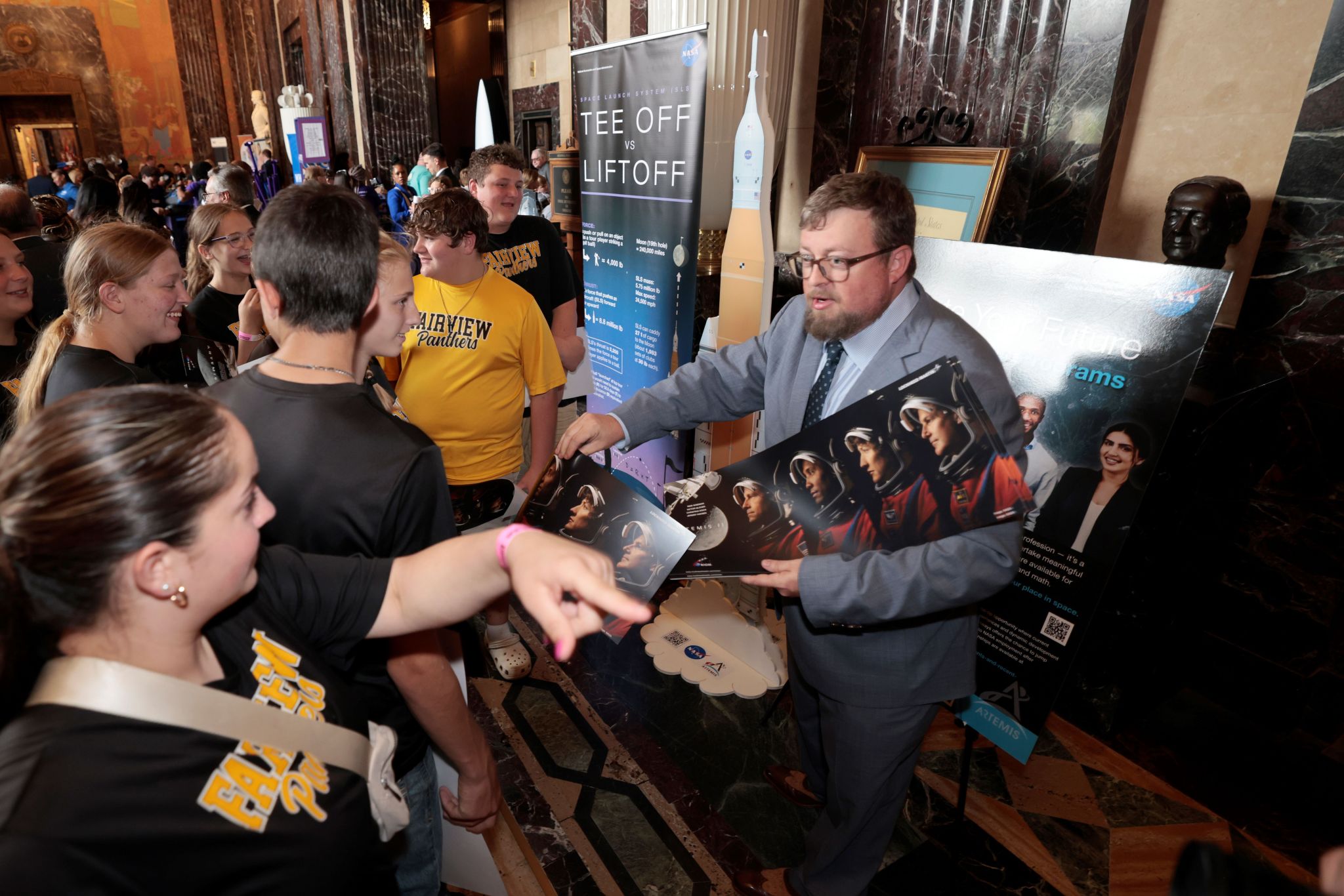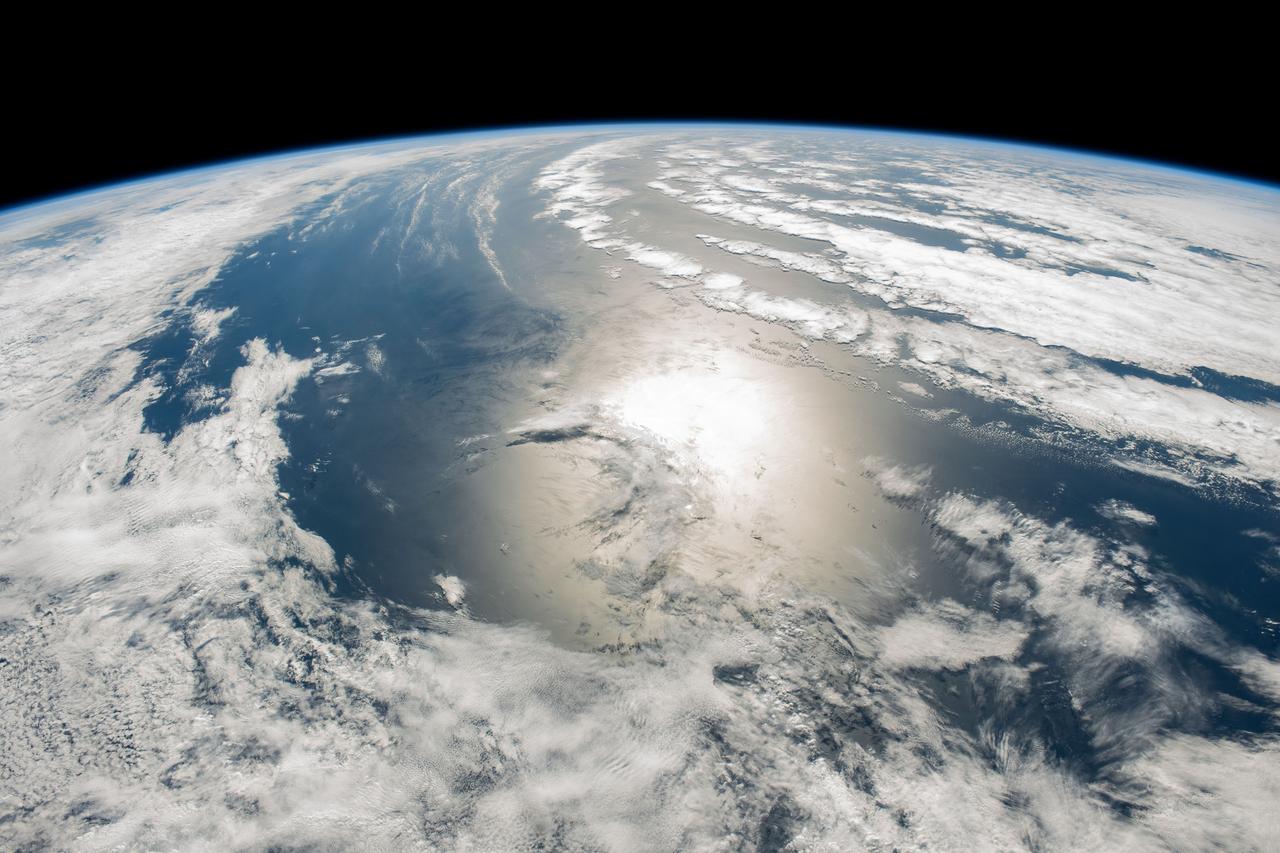Making Connections: Marshall Hosts Annual Jamboree, Poster Expo
By Celine Smith
Engineers, researchers, and scientists at NASA’s Marshall Space Flight Center had the opportunity to showcase their vast range of projects and learn about others at Marshall’s annual Science, Technology, and Engineering Jamboree and Poster Expo.
The jamboree took place May 16 in Activities Building 4316. Team members created and displayed more than 100 posters summarizing their projects at the center. From engineering easier ways for astronauts to take pictures in space to studying galaxies light years away, the projects represented Marshall’s diverse capabilities. The jamboree also included eight flash talks, which are brief speeches from team members about their research and experiments.
The idea to host a jamboree originated from flash talks presented during past holiday luncheons at the National Space Science Technology Center (NSSTC) at the University of Alabama in Huntsville.
“Scientists were only allowed to speak about their discoveries and research for two minutes and were limited to one slide,” said Tom Inman, lead organizer and assistant director of Marshall’s Science and Technology Office. A cowbell was rung if the speaker went over their time, which added to the fun.
The event became its own entity to bring together NSSTC and other Marshall technologists. With Marshall team members becoming more aware of all that’s happening at the center, they can better connect with each other, according to Inman. In addition, learning about existing work could aid another project or create an entirely new one.
“If we know what other people are working on it sparks more work and more innovation, while also building our portfolio and Marshall,” Inman said. “It’s an opportunity to see our colleagues and potentially collaborate.”
During the expo, engineers, researchers, and scientists stood alongside their poster, educating viewers and answering questions about their work. Food trucks were present right outside the building for the lunch. The event also was open to attendees from other government agencies at Redstone Arsenal. The jamboree attracted about 850 people.
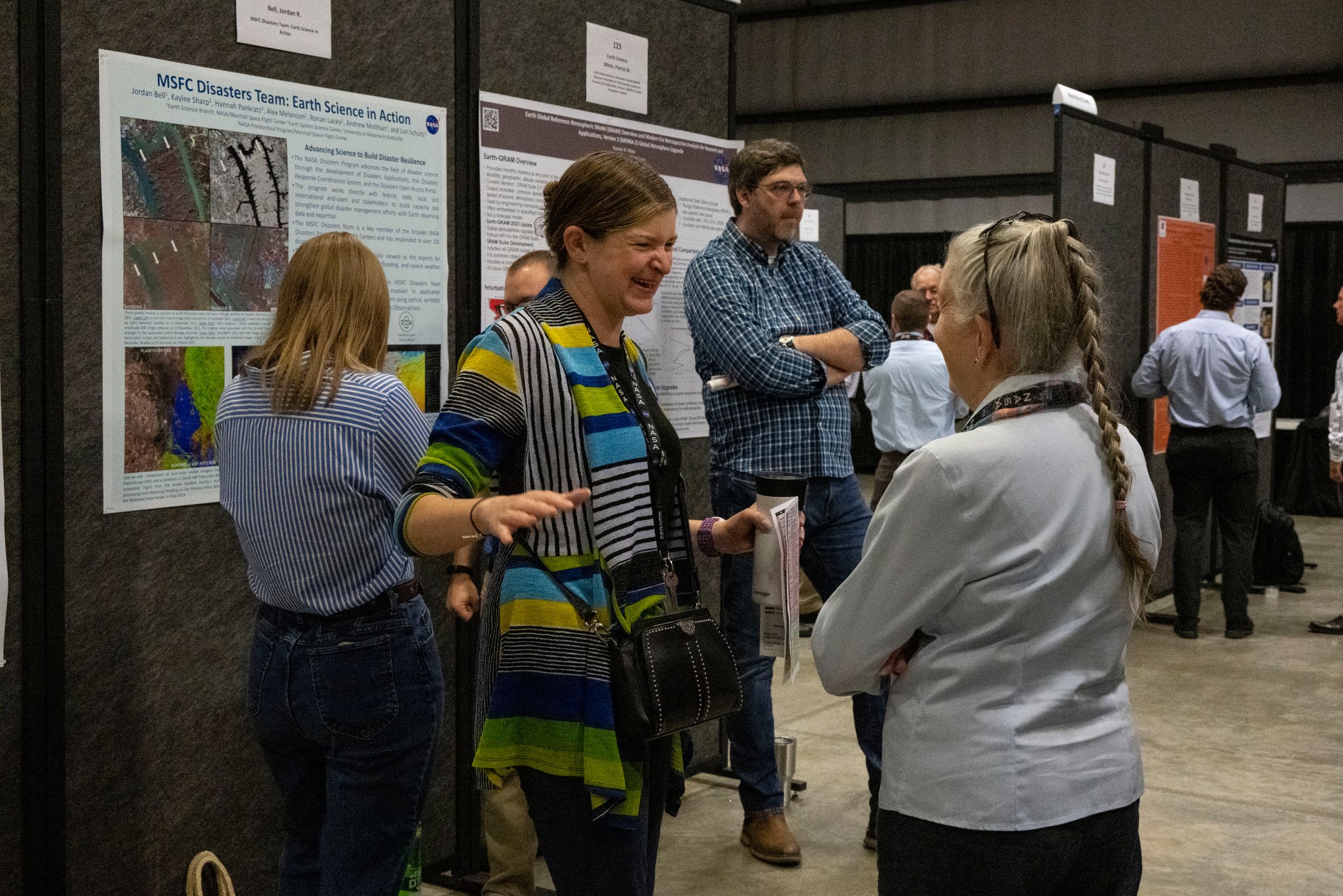
Larry Leopard, Marshall’s associate director, technical, welcomed attendees to the event.
“Innovation thrives in an environment where connections are nurtured, ideas are shared, and collaboration flourishes,” Leopard said. “That’s why today’s event is so important. It provides us with a platform to come together, exchange ideas, and forge new connections that will drive us forward.”
Smith, a Media Fusion employee, supports the Marshall Office of Communications.
Rae Ann Meyer Selected as Marshall’s Deputy Director
Rae Ann Meyer has been selected for the position of deputy director at NASA’s Marshall Space Flight Center, effective June 2.
In this role, Meyer will assist in leading Marshall’s nearly 7,000 on-site and near-site civil service and contractor employees and an annual budget of approximately $5 billion. She will also help guide the center as it continues to deliver vital propulsion systems and hardware, flagship launch vehicles, world-class space systems, state-of-the-art engineering technologies and cutting-edge science and research projects and solutions.
Prior to this assignment, Meyer served as Marshall’s associate director from 2022-2024, where she led execution and integration of the center’s business operations, mission support enterprise functions, and budget management.
Meyer was previously deputy manager of Marshall’s Science and Technology Office. Named to the Senior Executive Service position in May 2019, she assisted in leading the organization responsible for planning, developing, and executing a broad range of science and technology investigations, programs, projects, and activities in support of NASA’s science, technology, and exploration goals. The office also leads the pursuit of new partnership opportunities with other government agencies and private industry. Meyer helped oversee an annual budget of more than $475 million and managed a diverse, highly technical workforce of approximately 300 civil service and contractor employees.
Among her other roles over the years, she was manager of Marshall’s Science and Technology Partnerships and Formulation Office from 2017-2019, worked a detail as technical advisor in 2016 for the Office of Strategy and Plans at NASA Headquarters in Washington, and was chief of key Engineering Directorate structure and flight analysis divisions at Marshall from 2007-2017. Meyer was manager of the Constellation Support Office from 2006-2007. She led Marshall’s In-Space Propulsion Technology Office from 2004-2006 and was assistant manager of the Space Transfer Technology Project from 2000-2002, managing in-space technology program funding at NASA centers nationwide.
Meyer’s NASA career began in 1989 as a control mechanisms engineer in Marshall’s Propulsion Laboratory.
Among her achievements and awards, Meyer received a Meritorious Presidential Rank Award in 2023, a NASA Silver Achievement Medal in 2019; the NASA Outstanding Leadership Medal in 2012 for leading development of strategies for pursuing new program/project opportunities; a NASA Certificate of Appreciation in 2001 for leading formulation efforts to augment in-space propulsion technology budgets across NASA; and Marshall Director’s Commendations in 2004 and 2009, honoring her work on advanced technology development efforts supporting future science missions and major product development for the Ares Project Preliminary Design Review, respectively.
A native of Chattanooga, Tennessee, Meyer earned a bachelor’s degree in electrical engineering from the University of Tennessee in Knoxville in 1989.
Julie Bilbrey Named Director of OSAC at Marshall; Jeramie Broadway Named Deputy Director
Julie Bilbrey has been named director of the Office of Strategic Analysis and Communications (OSAC), and Jeramie Broadway as OSAC’s deputy director, at NASA’s Marshall Space Flight Center, effective May 20.
In Bilbrey’s new role, she will lead the organization in providing strategic planning, objective analysis, and comprehensive communication to support the policy, program, and budget decisions for Marshall. She has been deputy director of the Safety & Mission Assurance Directorate (SMA) at Marshall since May 2021. In that capacity, Bilbrey was jointly responsible for planning and directing the safety, reliability, and quality engineering and assurance operations for the center.
Prior to that, she held several leadership positions within SMA, including the Vehicle Systems Department manager from 2018-2021, Mission Systems Assurance and Technical Support Department manager (2016-2018) and the Program Analysis and Systems Integration branch chief (2009-2016).
Before joining SMA, Bilbrey’s previous roles have included associate manager of the Science and Mission Systems Office from 2006-2009, where she also held the position of chief operating officer of the National Space Science and Technology Center; associate manager of Space Systems Program Project Office (2005-2006); and team lead of the Flight Training Integration Team (1998-2004). From 1987 to 2004, Bilbrey was in payload operations where she supported various Spacelab missions and International Space Station increments as a flight controller and crew training manager.
Bilbrey has received numerous awards, including a Silver Snoopy, Space Flight Awareness Honoree award, NASA Outstanding Leadership Medal, and Center Director’s Commendations.
She holds a bachelor’s degree in industrial and systems engineering from Georgia Tech in Atlanta.
As OSAC deputy director, Broadway will assist in providing strategic planning, objective analysis, and comprehensive communication to support the policy, program, and budget decisions for Marshall.
He moves into his new role after being named as the center strategy lead for the Office of the Center Director in 2022. In that capacity, Broadway led and implemented the director’s strategic vision, leveraging and integrating Marshall’s strategic business units, in coordination and collaboration with all center organizations, to ensure alignment with the agency’s strategic priorities.
Before assuming that role, he was senior technical assistant to the Marshall associate director, technical, from September 2021 to October 2022. Prior to that detail, he was the assistant manager of Marshall’s Partnerships and Formulation Office, providing strategic planning and business development support and creating new partnering and new mission opportunities for the center.
Broadway, who joined NASA full-time in 2008, began his career in Marshall’s Materials and Processes Laboratory, supporting and leading production operations for the Ares I and Space Launch System program. Over the years, he served as project engineer or deputy project manager for a variety of work, including the Nuclear Cryogenic Propulsion Stage Project, for which he led development of advanced, high-temperature nuclear fuel materials. He was assistant chief engineer for launch vehicles for NASA’s Commercial Crew Program and assistant chief engineer for NASA’s Technology Demonstration Mission Program, managed for the agency at Marshall.
A native of Dallas and a U.S. Air Force veteran, Broadway earned a bachelor’s degree in mechanical engineering in 2008 from the University of North Dakota in Grand Forks, and a master’s degree in aerospace engineering in 2011 from the University of Alabama in Tuscaloosa.
Marshall, Michoud Leadership Join Industry at State Capitol for Louisiana Space Day 2024
By Heather Keller
NASA’s Michoud Assembly Facility, leading aerospace companies, and GNO Inc. hosted Louisiana Space Day 2024 at the Louisiana State Capitol in Baton Rouge on May 8.
The event marked a return to the Capitol following a year-long hiatus, and a rebranding from its former incarnation as NASA Day in Baton Rouge. While NASA maintained a major role in the day’s activities, Louisiana Space Day included participation from commercial and educational partners with emphasis on Louisiana’s contribution to space exploration, the critical impact the industry has on the state’s economy, as well as the importance of STEM education to maintain a skilled workforce.
Dispersed among the various activities of the day, NASA Marshall Space Flight Center Director Joseph Pelfrey, Michoud Director Hansel Gill, and NASA astronaut Josh Cassada met with Louisiana Gov. Jeff Landry, and Lt. Gov. Billy Nungesser, presenting them with certificates of appreciation to the state, which included flags flown on Artemis I. The NASA delegation also joined Louisiana Legislators for the reading of the Louisiana Space Day 2024 proclamation, and later joined the House and Senate Floors for readings of the resolutions.
Other activities included a chat with Cassada at the State Library for area middle-school, high-school, and college students, followed by a workforce development panel, which featured speakers from Boeing, GNO Inc., and directors Pelfrey and Gill.
Exhibitors from Michoud, Boeing, Lockheed Martin, United Launch Alliance (ULA), Blue Origin, American Institute of Aeronautics & Astronautics, University of Louisiana Lafayette, LA STEM, Partners for Stennis and Michoud, and select robotics teams from throughout the state were stationed within the Capitol building rotunda where they educated Louisiana lawmakers and visitors on the NASA mission, industry contributions, workforce development, and STEM opportunities for local youth. Passersby in the rotunda were able to watch videos, view robotics demonstrations, engage with exhibitors, collect giveaways, and take selfies with Cassada.
Keller, a Manufacturing Technical Solutions Inc. employee, supports Michoud Assembly Facility.
NASA Earns Best Place to Work in Government for 12 Straight Years
NASA was named May 16 as the 2023 Best Place to Work in the Federal Government – large agency – for the 12th year in a row by the Partnership for Public Service. The title serves as a reflection of employee satisfaction with the workplace and functioning of the overall agency as NASA explores the unknown and discovers new knowledge for the benefit of humanity.
“Once again, NASA has shown that with the world’s finest workforce, we can reach the stars,” said NASA Administrator Bill Nelson. “Through space exploration, advances in aviation, groundbreaking science, new technologies, and more, the team of wizards at NASA do what is hard to achieve what is great. That’s the pioneer spirit that makes NASA the best place to work in the federal government. With this ingenuity and passion, we will continue to innovate for the benefit of all and inspire the world.”
The agency’s workforce explored new frontiers in 2023, including shattering an American record for longest astronaut spaceflight, announcing the Artemis II crew, launching the Deep Space Optical Communications experiment, partnering on a sustainable flight demonstration later designated as X-66, and celebrating a year of science gathered from the agency’s James Webb Space Telescope. Feats beyond our atmosphere persisted with NASA’s OSIRIS-Rex (Origins, Spectral Interpretation, Resource Identification, and Security – Regolith Explorer) mission – the first U.S. mission to collect an asteroid sample. Insights from the asteroid data will further NASA’s studies on celestial objects, while the agency also continues its pursuit to return astronauts to the Moon as part of the Artemis campaign.
Along with being the 65th anniversary of the agency, 2023 brought new climate data with the launching of the U.S. Greenhouse Gas Center and Earth Information Center, new perspectives on Earth’s surface water through NASA’s SWOT (Surface Water and Ocean Topography) mission, and accrued air quality data from NASA’s TEMPO (Tropospheric Emissions: Monitoring of Pollution) mission.
“NASA has proven yet again that we have the most dedicated workforce in the federal government,” said Joseph Pelfrey, director of NASA’s Marshall Space Flight Center. “At Marshall and Michoud Assembly Facility, I am confident that our contributions to the agency’s missions have secured our place in this new era of space exploration.”
The Partnership for Public Service began to compile the Best Places to Work rankings in 2003 to analyze federal employee’s viewpoints of leadership, work-life balance, and other factors of their job. A formula is used to evaluate employee responses to a federal survey, dividing submissions into four groups: large, midsize, and small agencies, in addition to their subcomponents.
Read about the Best Places to Work for 2023 online.
Mission Success is in Our Hands: Brandon Reeves
By Wayne Smith
Mission Success is in Our Hands is a safety initiative collaboration between NASA’s Marshall Space Flight Center and Jacobs. As part of the initiative, eight Marshall team members are featured in testimonial banners placed around the center. This is the seventh in a Marshall Star series profiling team members featured in the testimonial banners. The Mission Success team also awards the Golden Eagle Award on a quarterly basis to Marshall and contractor personnel who are nominated by their peers or management. Candidates for this award have made significant, identifiable contributions that exceed normal job expectations to advance flight safety and mission assurance. Nominations for 2024 are open now online on Inside Marshall.
Brandon Reeves is the deputy manager of the Integrated Avionics Test Facility (IATF) at NASA’s Marshall Space Flight Center. His key responsibilities include providing leadership and decisiveness to design and build avionics hardware in the loop test facilities that support SLS (Space Launch System) flight software and mission verification.
Reeves has worked at Marshall for eight years. His previous roles include drafter, hardware in the loop tester, emulator test lead, IATF analysis lead, and IATF system engineering lead.
A native of Pike Road, Alabama, Reeves earned a bachelor’s degree in physics from Birmingham Southern College and an aerospace engineering degree from Auburn University.
Question: How does your work support the safety and success of NASA and Marshall missions?
Reeves: The Integrated Avionics Test Facility provides NASA with the highest fidelity hardware in the loop simulation of the Space Launch System vehicle. The ability to integrate and test flight like hardware within an integrated simulation allows NASA to know how the vehicle will react in every situation.
Question: What does the initiative campaign “Mission Success is in Our Hands” mean to you?
Reeves: Each individual plays a significant role in helping NASA achieve the impossible.
Question: Do you have a story or personal experience you can share that might help others understand the significance of mission assurance or flight safety? What did you learn from it?
Reeves: The testing performed in the Integrated Avionics Test Facilities demonstrates the numerous nominal and off nominal flight scenarios. This capability helps NASA improve vehicle algorithms and provides assurance that all vehicle systems will communicate as expected during each vehicle flight.
Question: How can we work together better to achieve mission success?
Reeves: NASA’s work is unlike any other in the entire world, our teamwork is leading humanity toward a better future that includes interplanetary travel. Communication with each other is always helpful and go see someone in person, when possible.
Smith, a Media Fusion employee and the Marshall Star editor, supports the Marshall Office of Communications.


















